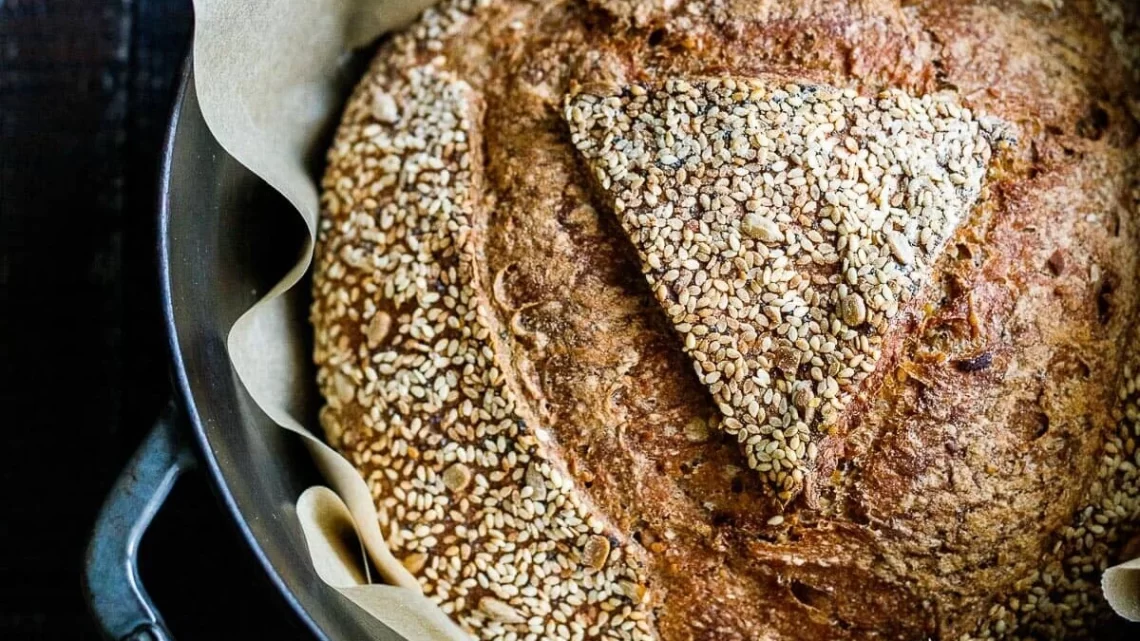Tools For Baking Bread
December 25, 2023Baking bread can be a rewarding and enriching activity. It requires patience and an attention to detail as well as knowledge of chemistry – not to mention providing an immensely satisfying sense of accomplishment!
Blend together yeast, water and sugar/honey in a large bowl until foamy; cover and let rest for 5-10 minutes until mixture becomes foamy.
Equipment
Bread making requires minimal upfront costs, and chances are you may already possess some of the equipment needed. But to take your baking to a higher level, there are a few tools you should consider purchasing to advance your craft.
Large mixing bowls can help minimize mess when working with sticky dough. A plastic scraper is an invaluable tool for manipulating dough and cleaning up messy work surfaces. A kitchen thermometer will enable you to achieve the optimal temperature for yeast-based recipes; while lame scoring equipment allows professional scorers to score bread dough to prevent uncontrolled crust cracking; finally a loaf pan allows you to bake your loaves in round shapes in your oven.
Ingredients
Basic ingredients needed for baking bread include wheat or rye flour, salt and an leavening agent such as yeast, baking powder or wild yeast (known as sourdough starter). Some bread recipes also call for butter or oil as well as milk sugar and eggs in addition to levening agents such as yeast.
Weighted dry and wet ingredients is key to creating uniform dough each time. Doing so helps you understand exactly what’s going into your dough mix, as it enables you to know exactly what it entails and make adjustments accordingly.
Before baking your loaf, score it using a sharp knife, razor blade or special tool known as a lame with one or more cuts to allow any sudden burst of gasses produced when entering a hot oven, known as “oven spring,” to escape in an orderly fashion without your loaf exploding into pieces.
Mixing
At its core, bread is comprised of flour, water, salt and yeast – but how these components come together and are mixed and kneaded can make a dramatic impactful statement about how good or bad the finished product is!
Yeast consumes starches present in flour to produce energy, and in return produces carbon dioxide gas that expands preexisting air pockets in dough. Additionally, this process produces ethanol – giving bread its distinctive yeasty aroma.
Bakers are careful when adding ingredients to their mixer or bowl, since adding salt too early may interfere with gluten development or even kill yeast colonies.
Rising
Rising is what gives bread its distinctive height, soft texture and delicious taste. A series of chemical and yeast/fungal reactions give rise to this process and give your loaf its signature height, softness and delicious flavor.
Yeast are tiny single-celled organisms that thrive on sugar. When yeast consume sugar, they “burp” out carbon dioxide that causes dough to expand and puff up.
Yeast is sensitive to temperature and will accelerate, decrease, or stop depending on its surrounding environment. To help your dough rise more effectively, place it near a warm source such as your hot water heater, oven or baseboard heat.
Forming
Once the dough has been thoroughly mixed and kneaded, it’s time for shaping. Shaping not only adds decorative value; it helps tighten up gluten strands for an improved loaf.
Gliadin and glutenin proteins found in wheat flour work together to form long chains, creating an elastic yet strong gluten network which gives bread its structure. It resembles an array of coiled and kinked springs similar to what would support roof joists and rafters.
Water is essential in the bread-making process. It hydrates starch granules, helping them expand when heated. Furthermore, water facilitates an enzymatic breakdown of starch to glucose which allows yeast to respire respire respire respire respire respire respire respire respire respire respire respire respire respire
Baking
Bread comes in various forms and textures depending on its recipe and baking methods used, with soft or crusty exteriors and dense, airy interiors depending on what recipe or technique is being employed to produce it.
Bread is baked in a hot oven until it is browned and fully baked through, as this causes its gluten molecules to tighten while starches gelatinize, producing its distinctive crumb texture. Bread may be scored before baking in order to allow its expansion without cracking the crust during its expansion period.
Line your bread pan with parchment paper as this can help stop its dough from touching directly against it and makes removal from its tin easier once baked.



